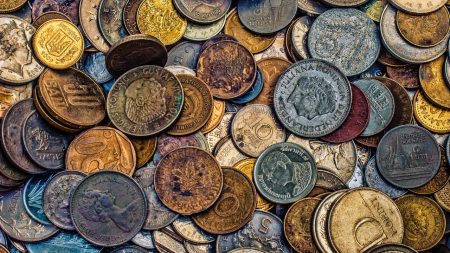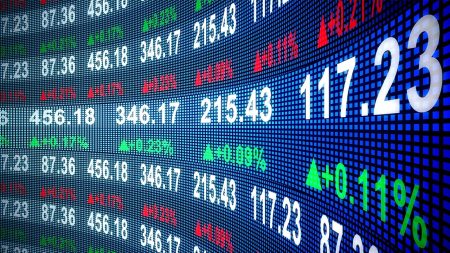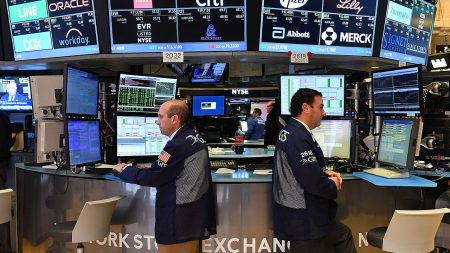Finding the best long-term ETFs can help reward you if you buy and hold, allowing you to compound your money over time. Even small differences in returns, just a few percent annually, can create an amazing improvement in your total wealth. But a key aspect of this process is the “buy and hold,” letting the market work for you instead of trying to time your buys and sells.
Below are some of the top long-term ETFs if you’re looking to compound your way to wealth.
How to find top long-term ETFs
If you’re on the hunt for the best long-term ETFs, one of the best places to start is by looking at funds’ long-term returns. A fund’s long-term returns are going to be the best gauge, albeit imperfect, to what it could return in the future. Of course, past results are not an indication of future returns, but winners have a tendency to keep on winning, so it’s a good place to begin. And then we can use a rule of thumb to gauge which funds might do even better in the future.
Generally, you’ll want as long a view of a fund’s returns as possible. Check out a fund’s 10-year returns. These returns are usually easy to find, and they’ll give you a clear indication of how a fund can perform over the long term. Long-term returns help filter out the years when hot money flooded the fund and drove up prices and the down years when returns weren’t so hot.
Avoiding what’s caught the market’s short-term fancy is important. Investing fads come and go, but if you’re looking for the best long-term ETFs, you need something with real staying power. So that’s why you look for 10-year returns — for the clearest view of what a fund could do in time.
So should you completely ignore a fund’s one-year returns? No. For at least two reasons.
- A fund’s short-term returns offer a measure of how hot a sector or market is currently.
- You can then use this measure to consider how attractive a fund’s near-term returns are likely to be.
For example, you’re likely to do better by investing in a fund with high long-term returns that has done poorly over the last year or so. Why? Because if you buy after a period of poor returns, in the near term the fund is likely to outperform in order to catch up to its long-term average. It’s what investing experts call “mean reversion” — the fund reverts to its average returns over time. In other words, you’ll earn above-average returns while the fund catches up to its average.
Of course, the opposite is true. Funds that have vastly outperformed their long-term returns over the last year or so are likely to underperform in the near term as they revert to their average.
While it’s important to look for funds with a strong long-term record, it’s also vital to think about recent performance to get a sense of how much above- or below-trend they’re running. If a fund is running well below trend, you might purchase it more aggressively than you otherwise would. Similarly, if the ETF is running hot, you might more carefully use dollar-cost averaging to get in.
Best long-term ETFs
With that in mind, below are some of the best returns from ETFs from a screen on ETF.com, with data as of August 22, 2024. The screening criteria are as follows:
- Top performers with 10-year returns around 12 percent annually
- No leveraged ETFs or inverse ETFs
- Expense ratio below 0.5 percent
These criteria show ETFs that have delivered outstanding returns at low cost, and avoids risky funds such as leveraged ETFs, which use options to juice returns. The list includes some of the best performers long term and long-term outperformers that have not done as well year to date.
VanEck Semiconductor ETF (SMH)
This fund tracks the performance of the MVIS US Listed Semiconductor 25 Index, which includes the companies involved in semiconductor production and equipment.
- 1-year return: 63.1%
- 10-year returns: 26.7%
- Expense ratio: 0.35%
Vanguard Information Technology ETF (VGT)
This ETF uses a passive investment strategy to track the MSCI US Investable Market Information Technology 25/50 Index, which includes information technology stocks.
- 1-year return : 35.0%
- 10-year returns: 20.2%
- Expense ratio: 0.10%
Technology Select Sector SPDR Fund (XLK)
This passively managed fund tracks companies that are classified as information technology companies in the GICS classification system, including those in internet software and services, IT consulting services, semiconductor equipment, computers and peripherals.
- 1-year return: 32.3%
- 10-year returns: 20.1%
- Expense ratio: 0.09%
Invesco QQQ Trust (QQQ)
This passive fund tracks the Nasdaq-100 index, which includes the 100 largest non-financial companies trading on the Nasdaq based on market capitalization.
- 1-year return: 31.6%
- 10-year returns: 18%
- Expense ratio: 0.20%
iShares Russell Top 200 Growth ETF (IWY)
This ETF tracks the performance of largest stocks in the Russell Top 200 Growth Index, in particular those with higher growth and higher price-to-book valuations.
- 1-year return: 36.7%
- 10-year returns: 17.2%
- Expense ratio: 0.20%
iShares U.S. Healthcare Providers ETF (IHF)
This fund tracks the Dow Jones U.S. Select Health Care Providers Index, which includes companies of all sizes that are owners and operators of hospitals and clinics, health maintenance organizations and rehabilitation and retirement centers.
- 1-year return: 14.1%
- 10-year returns: 11.2%
- Expense ratio: 0.40%
iShares U.S. Medical Devices ETF (IHI)
This fund tracks the Dow Jones U.S. Select Medical Equipment Index, which includes companies of all sizes that are manufacturers and distributors of medical devices and other non-disposable medical devices.
- 1-year return: 12.8%
- 10-year returns: 13.6%
- Expense ratio: 0.40%
Bottom line
Finding the best ETFs for buy-and-hold investing can really help you generate outstanding long-term returns, but a key part of that equation is the “buy and hold” element. You won’t generate those returns unless you commit to holding your investment long term, helping them to compound your wealth and avoid taxes, too.
Editorial Disclaimer: All investors are advised to conduct their own independent research into investment strategies before making an investment decision. In addition, investors are advised that past investment product performance is no guarantee of future price appreciation.
Read the full article here












